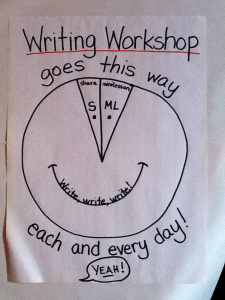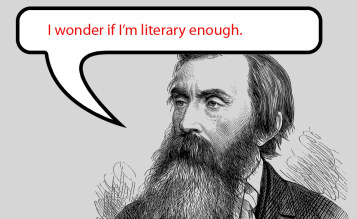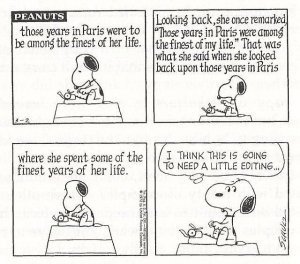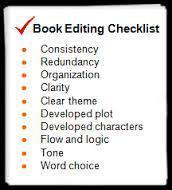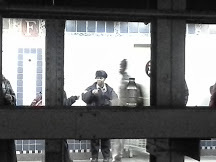Rochelle Campbell's Blog: The NoteBook Blogairy, page 23
July 12, 2014
Gluten-Free? Or, Not to be? With a Treat at the End
It’s been a long while since I’ve dialogued about my gluten-free journey. The main reason is I’m avoiding thinking/talking about it in my normal life. It’s been 13 months since I devoutly removed gluten from my diet and disciplined myself to reading labels — each and every time.
(It’s almost like going back to veganism again…almost.)
While my diet is still limited because I tend to eat the same “safe” foods over and over again, I can say with absolute joy that I have regained and retained my sense of smell! The nasal polyps I experienced for years and years and (OMG!) YEARS seem to have dissipated/shriveled/whatever/etc.! I can smell the lovely baked goods I choose to no longer consume! Yes, I said it — I CHOOSE to no longer consume. It took me over two years to get to this point and I am happy I made here.
The next journey, now that my health is better, is to see if I actually have celiac sprue. Sounds a bit cart-before-the-horse-ish, doesn’t it? Yes, again. I made the cardinal mistake of going gluten-free BEFORE getting tested for celiac disease. However, my focus was on feeling better.
However, with a little infant daughter now a part of my life, I want to ensure that she does not experience needless physical maladies if she doesn’t have to. Hence, my desire to know for sure.
So, in the past month, I’ve been visiting with Dr. Heller, a GI doctor of some repute. He gave me a thorough physical and took a full screening of blood tests. I am awaiting results now. My oral history, along with my Transglutimate enzyme serum levels indicate that I do have celiac sprue but he wants to know definitively which is why he requested another round of blood tests. [See what happens when you don't follow the cardinal rule of testing before abstaining??]
My stomach is in knots wondering about the test results. What if I am? What if I’m not? Am I crazy, in that case? Why do I feel ill when I ingest flour-based products if I don’t have celiac sprue? This is the lovely merry-go-round of questions that float unchecked through my mind day after day.
However, I will put it all to the side this weekend with a special treat I am giving to myself. I am going to make Raspberry (or blueberry!) Lemon Cheesecake Cookies! A good friend of mine who cares more about my sweet tooth than I do, sent me a link to 33 Amazing Gluten Free Desserts. (Yeah, okay, it’s for Valentine’s but, who really cares if they’re good???)
If you haven’t seen these dessert recipes before, this is your treat for slogging through my gluten woes diatribe! :-)
I love you all for reading/listening and would love to hear your gluten-free journey stories.
Ta-ta for now,
NB


July 11, 2014
Book Thoughts: White Teeth by Zadie Smith
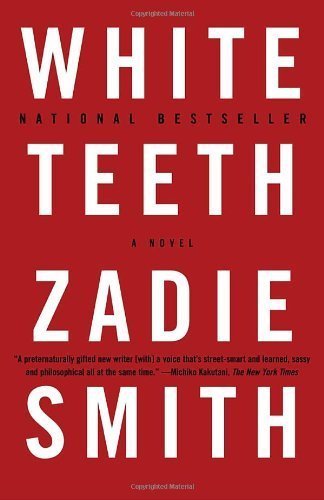
“White Teeth” is character-driven to the Nth degree (as all great literature needs to be). However, underneath the core of Samad Miah Iqbal, Archibald Jones, Clara Jones, Alsana Begum (Iqbal), Irie Jones, Millat and Magid Iqbal, Hortense (Clara’s mother) and the Chalfens — there is a rock-solid plot through all of the rollicking good humor that runs through Zadie Smith’s prose. The humor comes through both the narration, the characters’ dialog, and actions and leads inexorably towards the theme that you cannot outrun, or change, what is destined to be.
However, we don’t truly understand (or want to accept!) this fatalistic viewpoint until each of the characters play their trump cards. This happens on New Year’s Eve at an event that all of the characters attend each for their own differing reasons.
While we could wish for a sequel the reader will be fully sated with this wonderful stand-alone.
“White Teeth” is about a Bangledeshi family that relocates to the UK for a better life; the typical immigrant desire. The family’s patriarch, Samad Miah Iqbal is haunted by his family’s inglorious past. His great-grandfather, Mangal Pandey, fired the first shot against the British in the Indian Rebellion of 1857 — and missed! The firing of the gun should have been honorable except for the general belief that Pandey was intoxicated and that is the reason why he missed. In any case, he was killed for his actions.
This dubious claim to fame brings the double woes of misplaced pride and vengeance to his parenting style of his twin boys, Millat and Magid Iqbal.
Samad’s only friend, Archibald “Archie” Jones, a simple Englishman, whom Samad meets towards the end of World War II ends up being Samad’s neighbor is Willesden in North-West London. Their families form an uncomfortable relationship mainly because Archie’s wife is a Black Jamaican who speaks patois and their daughter, Irie, is inter-racial.
Samad and Alsana’s (his wife) biases seep through to their children creating untold angst, confusion, identity crises and misplaced loyalties and priorities for everyone — including the adults. Samad moved by his fear that being in the UK will make his children less of a Muslim (even though he is NOT a practicing Muslim) prompts him to kidnap one of his boys and spirit him away back to Bangladesh.
The separation from his twin creates an untenable emotional situation for Millat, the twin who was left behind. Along with the rage from Alsana regarding having one of her children removed without her sanction, the Iqbal house is not the cheeriest.
In come the Chalfens, an educated middle-class Jewish and Catholic family who are appointed by Irie’s and Millat’s school headmaster to tutor them after a weed-smoking incident (one of many) on the school grounds.
The Chalfens are all about science, art and botany. Millat excels at being charming to womenfolk under the watchful eye of Joyce Chalfen (who’s smitten with Millat). And Irie, finds out she actually has intelligence. She begins to do quite well in school.
The plot thickens and comes to a head when a genetic project that Mr. Chalfen is working on flames the fire on the question of who we truly are inside (remember, the immigrant angst mentioned above?). And, more importantly, can we be improved through science?
On New Year’s Eve, Chalfen’s project is put on display and all of the book’s characters are in attendance. What happens on this one night is the beautiful culmination of this book. I’ll not ruin the book for you by telling you any more.
Suffice it to say, this is a great read. This was Smith’s debut novel and she won numerous awards for it and it is clear why she did.
Rating: 5 Blogairy Notebooks


May 28, 2014
Penning Valuable (and Helpful!) Critiques
In case you didn’t see my Twitter profile, read my tweets, follow this blog, or my FB page — I’m taking a Gotham fiction writing course. Did I mention I LOVE it?? Anywho, now on to today’s topic…writing helpful critiques.
One of the first topics discussed in the Gotham course was how to pen a valuable critique of a fellow writer’s story submission. This came up because the first few days saw very few critiques posted. The instructor, Michael Davis (MD), decided to jump in and give additional support for this topic. I say additional because he provided a rather lengthy post WITH a critique example at the end of it. However, as the discussion unfolded, it became clear that many students did not feel comfortable critiquing the work of the other students because they felt they were novices.
Well, MD shared that part of the experience of reading and critiquing work from your peers includes one’s experiences in reading. We have read all of our lives and through that process have absorbed thoughts, ideas and insights about particular genres, styles and books. We should use those experiences to help shape what we discuss within our critiques.
MD also suggested that giving a summary of the work, sharing what you liked &/or thought worked well before going into what didn’t work so well in the piece is a great way to do a critique. This way, the critique writer is sharing positive feedback initially before sharing the not-so-positive stuff.
Another tip is to take a look at the writer’s bio and background prior to reading their story. This gives you a sense of who the writer is, their worldview, and maybe the bio will give a clue as to why the writer wrote the story you are about to read. While it is not germane to reading and critiquing the actual story the writer wrote it will sometimes help. For instance, if it is a WWII story and the writer was an infantryman. After reading his/her bio, you anticipate some ‘real’ Vet dialogue, or accurate depictions of battles from a perspective not previously seen/read before.
What if you read the story amped to get the above info and the writing is terrible? The critique writer may be more sympathetic and wonder if the Vet needs a ghost writer. Or, might you think the Vet is not really a Vet of the war? Who knows, but you get the gist.
In essence, MD suggested that we share our thoughts about what we feel as we read the story. Each of our perspectives is valid as we are READERS first and foremeost. While we should not sugarcoat what we write in the critique, we can frame things in the positive. Lastly, we can also ‘notice’ things about the story we read. We don’t have to say ‘if this were my story, I would do xyz –‘. What we could say is, ‘I noticed that you shifted the POV at the bottom of page x. Was that intentionally done to show us abc?’
The goal is to share your thoughts – from one writer to another. A simple way would be to turn it around. How would you feel if you received the critique you are about to submit/send/email? How would you prefer to hear it? Remember, at the end of the day this is a medium of expression. We don’t want to trample on budding writer egos!


May 26, 2014
Writing Rule #1: Verbosity Does Not Make It Literary
I’m taking this writing course with Gotham (NYC) and there are so many aspects of the fiction skill basket that are being covered, discussed, exercised and butchered. Yes, BUTCHERED. By whom? Yours true-ly. :-)
The most fun butchering occurred in this week’s exercise. We were to write a a descriptive sentence about the sky we’re looking at right now. Okay, no biggie, right? (Oh, you’d be so wrong if you agreed!)
My first stab at this assignment went like so…
The flat whitened grey blue expanse filled the uppermost portion of the subway car window complete with wispy strips of cumulus clouds strewn about; the sky seemed to be encouraging me to doze off as I stood sways arthythmically while the train bumbled along its route.
Did you happen to count how many words are in this one sentence? 46
Yup. I know — OVERkill. [Well, mine was not the longest one sentence!]
But lemme tell you, this was a freakin’ hee-larious class because the sentences got wilder, longer and crazier. There were a couple of short sweet and to the point ones (oops — a cliche! OMG.) But they were in the minority. The big verbose long-winded ones ruled the class and the last few days.
Before descriptions, it was POV. Before that we were focusing on plot and the first lesson was on character. We still have bunch of tools to handle but I am most interested in gaining more insight into ‘visual styles of writing’. This sounds like it will yield a lot of great depth in my work.
Getting back to the descriptive assignment I redid it and submitted a shorter (hopefully!) cleaner line:
The train bumbled along as I stood swaying and watching the flat grey-blue expanse interrupted only by spears of buildings.
So, even if I learn nothing else I know that a sentence should NOT have 46-billion words in it — length does not mean literary!! :-O
Ta-ta for now,
NB


April 28, 2014
Being Grateful – Repost from Marissa A. Ross
Original Post is here.
The Key To A Happy Life: Eight Ways To Practice Gratitude Marissa A. Ross

I have found there are two keys to life: Gratitude and a Thesaurus. You can pick up a Thesaurus just about anywhere, or look it up online, but gratitude is a little bit harder to come by for some of us. It’s easy to forget– or sometimes, not even see– how fortunate we are to have all that we do in our lives.
Being consciously grateful is essential to a happy life. It keeps you positive and optimistic, which are two of the most important things you can be. Never forget that you get what you give, and being a positive person will bring more positive people, events and opportunities into your life. By being grateful for those things, you are basically tipping your hat to the universe who in turn will be like, “Wow, this girl really appreciates the goodness in her life, I’m going to send her some more!”
Or, something like that.
The universe has never actually spoken in words to me.
So, it may speak a little more professionally for all I know.
The point is, I truly believe this. I truly believe that being grateful opens you to more opportunities to be grateful for. This has proven true in my personal life, and these are the steps I took to get into the mindset I am in today.
Be Thankful
Look around you. No matter who you are, there is something to be thankful for. A roof over your head, the food in your fridge, your family and friends. Each of these things are truly a gift. Every day that you are in good health, every day that you get to go to work, every day you get to drink clean water. When you begin to recognize the goodness in your life, and make a conscious effort to be grateful for those things, you will see that every day there is more and more to be thankful for.
If you honestly think there is nothing to be thankful for in your life, you’re not trying hard enough. At the very least, you should be thankful you are fortunate enough to have access to a computer with internet to be reading this.
Turn Negatives Into Positives
Being grateful makes it really easy to turn negatives into positives. This is a great practice to get into, and that’s what it is, a practice. Many of us aren’t taught to be actively grateful, so you have to make an effort. Next time you feel like complaining about your job, but be grateful you have a job. When you’re pissed off your mom is coming down hard about your grades, but be grateful you have a parent who cares. Your attitude and your world view is shaped by how you think. If you can change the way you think, you can change your world.
Appreciate Challenges
A person is not defined by what happens to them in their life. A person is defined by how they deal with what happens in their life. We all have hardships to overcome, and with each hardship, you have a choice. You can either choose to let it break you, or choose to let it make you. I’m not saying not to grieve when bad things happen, or that you have to be happy all the time, but what I am saying is that you have to use the challenges in your life to make yourself a better person. With every suffering you endure, there is something to learn. We must be grateful for those opportunities, because that is how you grow and become a stronger person.
Love Everyone
Don’t confuse this with having to “like” everyone. There is no way you’re going to like everyone, just like there is no way everyone is going to like you. But you can love every person that comes into your life, because each of them can teach you something about yourself and the world. Be aware of yourself, your relationships and how they make you feel. The people who bother you most, usually have the most to teach you. Love your scatterbrained lab partner because he is teaching you to be more patient. Love the rude girl at the party because you know her evil glares stem from her own insecurity. Love your jerky co-worker because they are giving you the opportunity to practice standing up for yourself and voicing your opinions.
Treasure Moments– No Matter How Big Or Small
I just chased my dog all over the house, and after he got tired, he rolled over on his back with the biggest smile on his tiny face. It’s these simple things, like making my loved one’s life more enjoyable, that makes my life more enjoyable. Relish in the moments you spend with friends, laughing at a dinner party. Thank God for your parents’ craziness during the holidays because it is in part what has made you what you are. Run around outside because you love the sunshine. Each moment you take the time to be present in will help you garner a deeper appreciation for life.
Ideas For Daily Exercises In Gratitude
Sometimes just telling yourself to think a new way can be hard, so here are some ideas to help make thinking gratefully easier.
• Keep a gratitude journal
Every night, write down ten things you are thankful for that day and how they affect your life. Even if it’s just the budding roses outside your window, that’s something to be thankful for. They are giving you a prettier view, aren’t they?
• Learn a prayer for gratitude
Here is a good one I found at Zen Habits:
Be Thankful
Be thankful that you don’t already have everything you desire,
If you did, what would there be to look forward to?
Be thankful when you don’t know something
For it gives you the opportunity to learn.
Be thankful for the difficult times.
During those times you grow.
Be thankful for your limitations
Because they give you opportunities for improvement.
Be thankful for each new challenge
Because it will build your strength and character.
Be thankful for your mistakes
They will teach you valuable lessons.
Be thankful when you’re tired and weary
Because it means you’ve made a difference.
It is easy to be thankful for the good things.
A life of rich fulfillment comes to those who are
also thankful for the setbacks.
GRATITUDE can turn a negative into a positive.
Find a way to be thankful for your troubles
and they can become your blessings.
- Author Unknown
• Meditate
My favorite meditation is one by Dr. Wayne Dyer. I’ve definitely mentioned it before, but his guided Meditations For Manifesting includes an awesome evening meditation for being grateful.
I hope these tips help you guys, I am truly grateful for the opportunity to share these with you. I will take this time to say, I am grateful for every post I am able to share on HG, and for every one of you who reads them. This site has enriched my writing career and life, and every day I am thankful for it.
Now to get you started, leave me a comment and tell me about what you are thankful for today. 


April 22, 2014
Happy Writer Wednesday! (Thanks Liphar Magazine!!)
On this fab Spring Wednesday, there is a wondrous thing afoot…the publication of one of my short stories!
Liphar magazine, an online literary journal based in Australia, is giving voice to over a dozen writers in each issue. In this, their second issue, you can find interviews, articles, art, new book finds and, yeah — short stories.
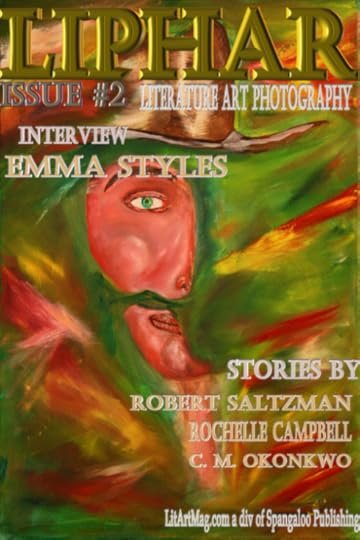 Visit the Liphar website and download this second issue, and the first issue at no charge. Be sure to read my story, come back here and leave a comment. I look forward to hearing from you!
Visit the Liphar website and download this second issue, and the first issue at no charge. Be sure to read my story, come back here and leave a comment. I look forward to hearing from you!


March 24, 2014
Tell the Dust Bunnies to Stop Squeaking
As I’m working through the edits of my novel, I swear it feels like pulling teeth. While the hard work of creating the story is complete, the polishing and refining of the story, the language and the flow is still to be done. This is painstaking because, for me, I think and re-think the silliest things — comma placement. Italicize? Or, not to italicize. That should never be the question but it so very much a consideration.
As I’ve been reading other writer blogs and reading memoirs of writers/authors, I am not alone. My fellow scribes all have this issue with perfecting the words they have written. How do you whittle down and yet still have razor sharp verbiage that feels true to life (while being totally fictional) and maintain iambic pentameter (if you dare!)?
So, my #MondayMotivation advice? Jump in with both feet and do what’s best for your WIP. If you need to massage and pamper it with your time and love — do it. Map out the timeline of your project and do a little bit each day — in spite of it feeling like pulling teeth. With a suggested schedule, you will only pull teeth a few minutes (or an hour) a day. Before you know it, a little pain each day will amount to a completely polished WIP that you can be proud of!
Now, you only have to deal with your kitchen, the dust bunnies under the bed, the curio, the laundry, the mudroom…
Ta-ta for now,
The NoteBook Blogairy


March 18, 2014
Flatbush Bottle: A Real-Life Story Starter
In the last few months, I’ve been using a new train route. The people are new. The stops are different. The smells are different. (If you’re a New Yorker, you know what I mean!) However, there’s an unusual fixture at one particular train station.
In between the tracks, there are iron girders that divide the two tracks. It is a ‘natural’ leeway so that when the tracks are being worked on MTA track employees can perch safely out of harm’s way without having to get up on the platform (a tiring exercise!) every time a train comes into the station (which is frequently!).
At about the mid-point of the station, on the girder is a bottle filled with what looks to be water. It’s a bit too far away for me to read the label but it appears it once originally held Lipton Iced Tea. There is now a visible layer of black soot on the neck of the bottle.
I first noticed this bottled about a month ago. I figured it would be removed by ‘someone’ at some point fairly soon.
A month, or so, later it’s still sitting in its high perch untouched by the hundreds of subway cars that rumble through that station day and night, 24 hours a day, 7 days a week. The vibrations are not even moving this bottle. How is this bottle managing to stay put so supremely and flick its proverbial nose at the mere mortals who look upon its smooth, albeit dirty, countenance.
I wondered and have wondered about the following:
How did the bottle get up there in the first place?
How is it managing to stay on the girder even with the rumbling vibrations from the trains passing by?
What was the purpose of putting the bottle there?
What’s really inside of the bottle?
Is this some kind of grand experiment and there’s a camera somewhere at that station watching and waiting to see if someone will try to move the bottle?
Then my brain begins going down a writerly road…
What if the bottle is portal key and whoever touches it will be instantly transported to another dimension in a train station far, far away…
What if the bottle was placed there through the window of a subway car when it was off-loading and waiting in the station for the signal to leave. What if the owner was bored to tears and left a message in the bottle for another bored restless NYC MTA commuter? If so, what does the message say?
What if the bottle contains the spirit of a genie who can grant only 1 wish and that wish must be conducted — in some way shape or form — within a station of the NYC MTA subway system?
What if it’s just a stinkin’ bottle that was tossed out of a train window and by sheer luck it landed right-side up on the girder? The shock of the million-to-one shot made the bum change his priorities and change his life around. And what if that bum believes that as long as that bottle stands there his life will continue to improve?
See how a simple unusually placed object in a not-so-ordinary position can fire the brain?
How do you think the bottle got there? What’s its story? How about we all collectively write a story about it? And when the story’s done, I’ll post it on this blog. What do you say??


March 17, 2014
Whose Rights Reign Supreme?
Twitter is an amazing place. Yes, it can be frustrating. Yes, it can be inane. But yes, too, Twitter can be a rewarding social arena where you can meet new friends that you may not have met IRL (in real life – :-0).
But there are some words of caution for those who venture into the Twitter waters. You must review your feeds on a regular basis. Not just the tweets you send out and retweet (RT) but you must check your timeline (home feed) and see what is there. Sometimes, you will be surprised at what you see.
I’ll give you an example. I’m a writer and I love to support other writers. I generally check the last day or two of a person’s feed before following back, or adding to one of my lists. And most of the time, things are fine and I follow with no reservations. In the last few days, I decided to be more vigilant as I have more followers and I wanted to make sure all was in line with what I’m about (writing, the writing life, writer support, writing sprints, etc.).
As I was scrolling through my timeline, I noticed a pic RT’d by one of my loyal followers and it was a picture of male genitalia. I scrolled past it and about 5 tweets later my brain caught up and I scrolled back. Yup. I saw what I saw. In total shock, I checked on who I was following and checked their timeline — again.
For the most part, the tweets are GREAT! Interesting articles. Cute animal pics. Fun quotes and tweets from other writers in support of their books/works. But, every 50-60 posts there are pics that are way too racy for me and what I’d like to have in my home feed. However, to find these tweets, I had to dig deeper into that feed’s timeline. I should have known from the profile verbiage but my thinking was that there would be tasteful pics (I did not see a warning about the explicit nature of some tweets).
Well, I’ve learned a valuable lesson. I appreciate everyone’s right to self-expression but when their First Amendment freedom infringes upon mine I have to do something about it. I’m still following them in support of their artistic expression but I am not RT’ing their tweets. That’s the decision I’ve settled upon.
How do you deal with followers/tweeps whose content leaves you feeling a bit peaked?


March 12, 2014
The Writing Life: It’s a Process, Not a Problem
Writing has been my pastime for over two decades. I say pastime as it has not been a major source of income for me. However, it has been a wonderful outlet for my creativity. I have written everything from press releases, business profiles to short stories and novels. In all of this time, I have not focused on polishing/editing a longer work. I find myself now at that juncture. What a big job!
My first completed novel “Opening Up” was edited professionally, and I created the book cover. I was elated when the book went live through Smashwords and Amazon. Then, a few days later, the first of several reviews went up. And yup, you guessed it — the reviews were not flattering. They liked the writing but HATED the POV character. Three of the four reviews spoke of the POV character being bipolar; if she was going to be a diva (read: bitch) she should do so full out and not be nice in one area and crazy ridiculous in another area. The next observation (read: complaint) was that another character that fully shows up approximately 1/2 way into the book was the really interesting character. The four reviewers unanimously stated they wanted to see more of this character right up front.
So, while my first foray into the novel form was not wholly successful, the reviews were extremely helpful! I pulled the book down and took a closer look at the entire work in light of the reviews. In conjunction with insight from my writing mentors, it was shown that the reviewers were right. This book is women’s fiction.
That whole book needed to be re-written from the POV of this character that showed up in deep the original book. What ultimately came out of this process was a totally new book. “Opening Up” has to be re-written; some of the same characters will be in the new book but it has a totally different focus. The new book also will have a new name. So, good idea but implementation needed work. This newly edited version of “Opening Up” was no longer women’s fiction; it was going to be African-American/spiritual/women’s fiction So, I put this book aside and went on to a new book realizing that the newly revised book would need lots of research.
Now, this new-new book was a totally different genre something that I thought would be “easier” — a supernatural cop thriller; et’s call it SCT. (I’m a masochist, aren’t I??). This SCT book went along swimmingly because I wrote the outline first full outline that spanned 6 pages hitting all of the plot points. Therefore, when I wrote it, the writing came fairly easily as I knew where the book was going at each major point.
The book’s first draft was completed in 3 1/2 months. The editing took a bit longer and it was not fully completed until May 2013 (it was started in late October 2012. Since May, I’ve submitted it to a number of agents and publishers, the consensus? This book has a great story but the writing needs to be ‘elevated’. This stumped me to no end.
I’ve been writing for a LONG time. I’ve been told I write well yet my fiction writing needs to ‘go to the next level’? Throw this in with 3 kids, a fairly demanding full-time job, and trying to have quality time with my spouse? Yeah, this book also got pushed to the side. After the depression lifted a bit, I decided to take another gander at the reviews/feedback on SCT. Again, not bad reviews. But work was needed.
Therefore, I focused on trying to figure out what the issue is/was. I’ve since enrolled in a writing course that will help me find the strengths and weaknesses of my writing and provide valuable feedback from editors of a well-regarded literary journal. Secondly, I am writing daily and working on one short story a month and editing each of them — you know, to get that editing/polishing muscle out of its atrophied state.
And you know what? One of my short stories has been accepted for publication in an online magazine! (Don’t you love a nice ending to a sad story??)
While this is a step in the right direction, I am still looking forward to the writing course to help me truly discern what I need to work on and improve in my writing. Hence my Twitter moniker — Writing is a process; not a problem!
As you read this my fellow writers, what has been your journey in the writing process? Do you/did you find that you needed assistance to bring forth the true shine of your writing projects? Did you achieve success (or any measure of success) when you implemented certain changes/solutions?
Please share!! I’d love to hear how you have navigated this gnarly writing path.
All the best,
The NoteBook Blogairy


The NoteBook Blogairy
Making you smile one blog post at a time!
- Rochelle Campbell's profile
- 162 followers



